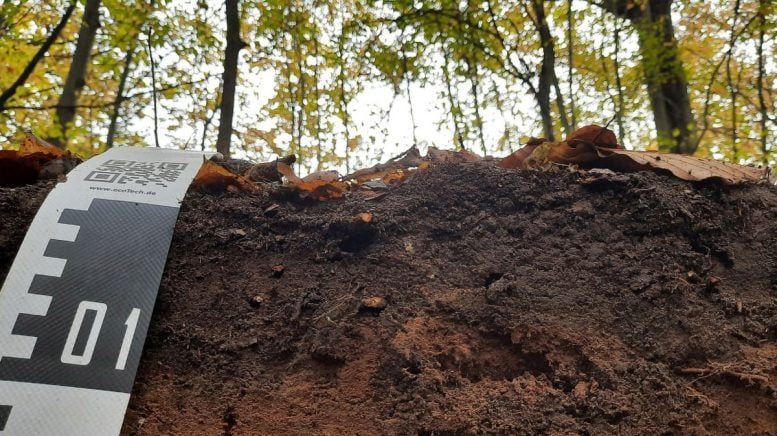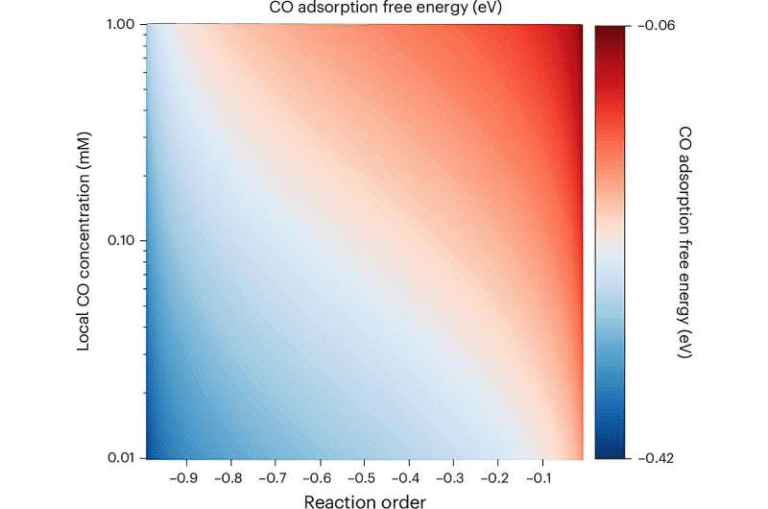Forests Are Now Trapping Plastic – A New Study Reveals How Deep the Problem Goes

A new study has shown that microplastics and nanoplastics are not only polluting oceans, rivers, and farmland but are also ending up in forests, where they get stored in soils for decades. This research, led by scientists at TU Darmstadt, and published in Nature Communications Earth & Environment in August 2025, provides one of the clearest pieces of evidence yet that atmospheric deposition—plastic particles carried through the air—is a major pathway for microplastic contamination in natural ecosystems.
The findings are both surprising and concerning. Forests have long been thought of as relatively untouched spaces compared to farmland and urban soils, but this study shows that they too are collecting significant amounts of plastic pollution, acting as sinks for particles floating through the atmosphere.

How Microplastics Enter Forests
The researchers explain that plastic particles mainly arrive in forests from the air. Once in the atmosphere, microplastics settle on the canopies of trees. This process is sometimes described as the “comb-out effect”, where leaves and branches filter and capture airborne particles.
But they don’t stay up there for long. Rainfall washes them down into the soil, and in deciduous forests, falling leaves in autumn transport even more microplastics downward. As the leaves decompose, the particles are released into the soil.
This means that forest litterfall and decomposition become key drivers of how plastics are deposited and stored. The process is ongoing, meaning forests are constantly collecting more microplastics as long as the air around them contains these pollutants.
Sampling and Methods
The research team collected soil and leaf samples from four forest sites east of Darmstadt, Germany. They used a refined analytical method that could detect and measure plastic particles larger than 20 micrometers in soil, fallen leaves, and throughfall (the water that drips off tree canopies after rain).
The team then applied spectroscopic methods to chemically analyze the particles, which helped them determine not just the amount but also the polymer types and shapes. To understand the historical buildup, they also created a model estimating atmospheric microplastic inputs since the 1950s, using data linked to European plastic production.

This combination of sampling, chemical analysis, and modeling gave them both a present-day snapshot and a decades-long perspective of how microplastics accumulate in forest soils.
What the Study Found
The results were striking.
- Concentration levels: Microplastic concentrations in forest soils ranged between 120 and 13,300 particles per kilogram of dry soil. The average concentration was around 4,440 ± 3,690 particles per kilogram.
- Distribution in soil layers: The highest concentrations were found in decomposed organic horizons (layers of partially decomposed leaves and organic matter), averaging about 5,940 particles/kg. The mineral soil horizons had lower but still substantial levels at around 3,670 particles/kg, while the surface litter layer (fresh leaves and twigs) contained about 3,020 particles/kg.
- Stock per square meter: When scaled to total stocks per area, the microplastic load varied widely by site, ranging from 200,000 to nearly 1 million particles per square meter of forest soil.
These numbers reveal that forests are storing a significant reservoir of plastic pollution.
The Role of Throughfall
Throughfall deposition turned out to be a major source. On average, the researchers observed 9.1 ± 9.4 plastic particles per square meter per day entering soils through throughfall.
Interestingly, the polymer types found in throughfall and soils matched closely. The dominant polymer was polypropylene (PP), followed by polyethylene (PE) and polyamide (PA). This consistency suggests a clear link between atmospheric deposition and what ends up stored in soils.
Not only did the chemical makeup match, but so did the size distribution and shapes of the microplastic particles. This reinforces the idea that atmospheric deposition—rather than local pollution from forestry or nearby dumping—is the primary contributor in these sites.
Transport and Storage in Forest Soils
Once microplastics reach the soil, they don’t just sit at the surface. They move downward, carried by decomposition processes and the activity of soil organisms that break down organic matter. Over time, this vertical transport redistributes microplastics from the litter layer into the mineral soil beneath.
By modeling historical deposition since the 1950s, the researchers showed that the current stocks of microplastics in these soils could be explained by 70 years of atmospheric deposition—essentially from the start of the global plastic boom to now.
Even under conservative estimates of deposition rates, the model suggests that throughfall alone could account for the majority of the observed accumulation.
Why This Matters
The study highlights several important points:
- Forests as sinks: Forest soils act as long-term sinks for airborne microplastics. Over decades, they store millions of particles per square meter.
- Indicators of pollution: Because forests effectively “comb” the atmosphere of particles, the amount of microplastic in forest soils can serve as an indicator of broader atmospheric pollution levels.
- Ecosystem risks: The buildup of plastics in soils could affect soil structure, microbial activity, nutrient cycling, and overall forest health. Combined with climate change, this adds an extra stressor for ecosystems already under pressure.
- Human health angle: The study also underscores how widespread airborne microplastics are. If forests are filtering large amounts from the atmosphere, it means these same particles are also present in the air we breathe.
Extra Context: What Are Microplastics?
Microplastics are tiny plastic particles smaller than 5 millimeters. They are formed either when larger plastic items break down (secondary microplastics) or are manufactured at that size (primary microplastics, such as microbeads once used in cosmetics).
Nanoplastics are even smaller, less than 1 micrometer, and are more difficult to detect. Because of their size, they can be transported long distances in the atmosphere, enter water systems, or even penetrate biological tissues.
Research has already shown microplastics in oceans, rivers, agricultural soils, and even drinking water. Now, forests can be added to the list of ecosystems that are receiving and storing them.
How Do Microplastics Travel Through the Atmosphere?
Microplastics get into the air from a variety of sources:
- Urban dust and tire wear from vehicles
- Industrial emissions
- Resuspension of plastic particles from soil or water surfaces by wind
- Synthetic textiles releasing fibers during wear and washing
Once airborne, they can travel long distances. Studies have detected microplastics even in remote mountain regions and polar environments. The fact that forests in Germany are receiving constant deposition shows that no ecosystem is entirely safe from airborne plastic pollution.
Potential Impacts on Forest Ecosystems
The presence of microplastics in soil can potentially:
- Alter soil structure, affecting water retention and root growth
- Interfere with microbial communities, which are critical for nutrient cycling
- Affect the activity of soil fauna, such as earthworms and insects, which play roles in decomposition
- Introduce toxic chemicals that may leach from the plastics over time
While this study didn’t focus on ecological impacts, it sets the stage for further research into how microplastic pollution might affect forest biodiversity and resilience.
Why This Study Is Important
This research is significant because it’s the first detailed evidence of forests being directly polluted by airborne microplastics and shows the connection between atmospheric inputs and soil storage. Forests, once thought to be relatively protected from plastic waste, are now revealed to be active collectors of it.
It also provides a new method for monitoring global atmospheric microplastic pollution. If forests are acting as filters, then analyzing their soils could be a reliable way of estimating the extent of airborne contamination worldwide.
Conclusion
This study adds forests to the growing list of environments where microplastics are present. By showing that these ecosystems collect and store atmospheric microplastics over decades, it highlights just how pervasive plastic pollution has become.
Forests already face significant stress from climate change, and now, microplastics may be another invisible pressure undermining their health. Beyond ecosystems, this also raises alarms for human health, since the same particles being filtered by trees are also in the air we breathe daily.
Plastic pollution is not just a marine issue anymore. It’s in the soil beneath our feet, the rain that falls, and the air around us. Forests are telling us something: the problem is bigger, more widespread, and more urgent than we may have imagined.





